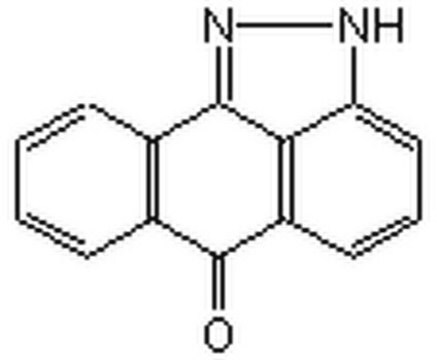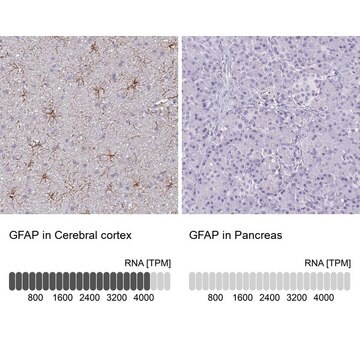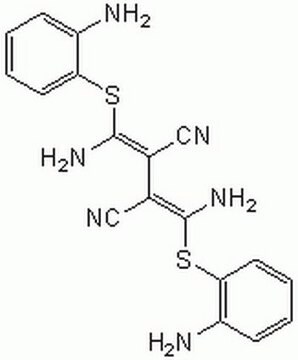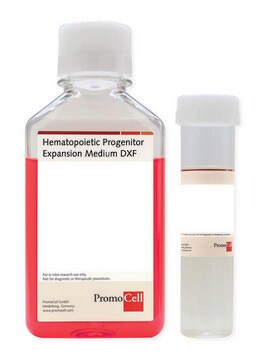Wichtige Dokumente
SML0333
NVP-BHG712
≥98% (HPLC)
Synonym(e):
4-Methyl-3-[[1-methyl-6-(3-pyridinyl)-1H-pyrazolo[3,4-d]pyrimidin-4-yl]amino]-N-[3-(trifluoromethyl)phenyl]-benzamide
About This Item
Empfohlene Produkte
Qualitätsniveau
Assay
≥98% (HPLC)
Form
powder
Farbe
white to beige
Löslichkeit
DMSO: 2 mg/mL, clear
Lagertemp.
−20°C
SMILES String
Cc1ccc(cc1Nc2nc(nc3n(C)ncc23)-c4cccnc4)C(=O)Nc5cccc(c5)C(F)(F)F
InChI
1S/C26H20F3N7O/c1-15-8-9-16(25(37)32-19-7-3-6-18(12-19)26(27,28)29)11-21(15)33-23-20-14-31-36(2)24(20)35-22(34-23)17-5-4-10-30-13-17/h3-14H,1-2H3,(H,32,37)(H,33,34,35)
InChIKey
ZCCPLJOKGAACRT-UHFFFAOYSA-N
Anwendung
- to study its effects on human colorectal cancer cell growth in vitro and the growth of tumor cells in mice.
- to study the regulation of endothelial nitric oxide synthase.
- to study its effects on vascularization and growth of endometriotic lesions.
Biochem./physiol. Wirkung
Leistungsmerkmale und Vorteile
Signalwort
Danger
H-Sätze
Gefahreneinstufungen
Acute Tox. 3 Oral
Lagerklassenschlüssel
6.1C - Combustible acute toxic Cat.3 / toxic compounds or compounds which causing chronic effects
WGK
WGK 3
Flammpunkt (°F)
Not applicable
Flammpunkt (°C)
Not applicable
Hier finden Sie alle aktuellen Versionen:
Analysenzertifikate (COA)
Die passende Version wird nicht angezeigt?
Wenn Sie eine bestimmte Version benötigen, können Sie anhand der Lot- oder Chargennummer nach einem spezifischen Zertifikat suchen.
Besitzen Sie dieses Produkt bereits?
In der Dokumentenbibliothek finden Sie die Dokumentation zu den Produkten, die Sie kürzlich erworben haben.
Verwandter Inhalt
Discover Bioactive Small Molecules for Kinase Phosphatase Biology
Unser Team von Wissenschaftlern verfügt über Erfahrung in allen Forschungsbereichen einschließlich Life Science, Materialwissenschaften, chemischer Synthese, Chromatographie, Analytik und vielen mehr..
Setzen Sie sich mit dem technischen Dienst in Verbindung.








